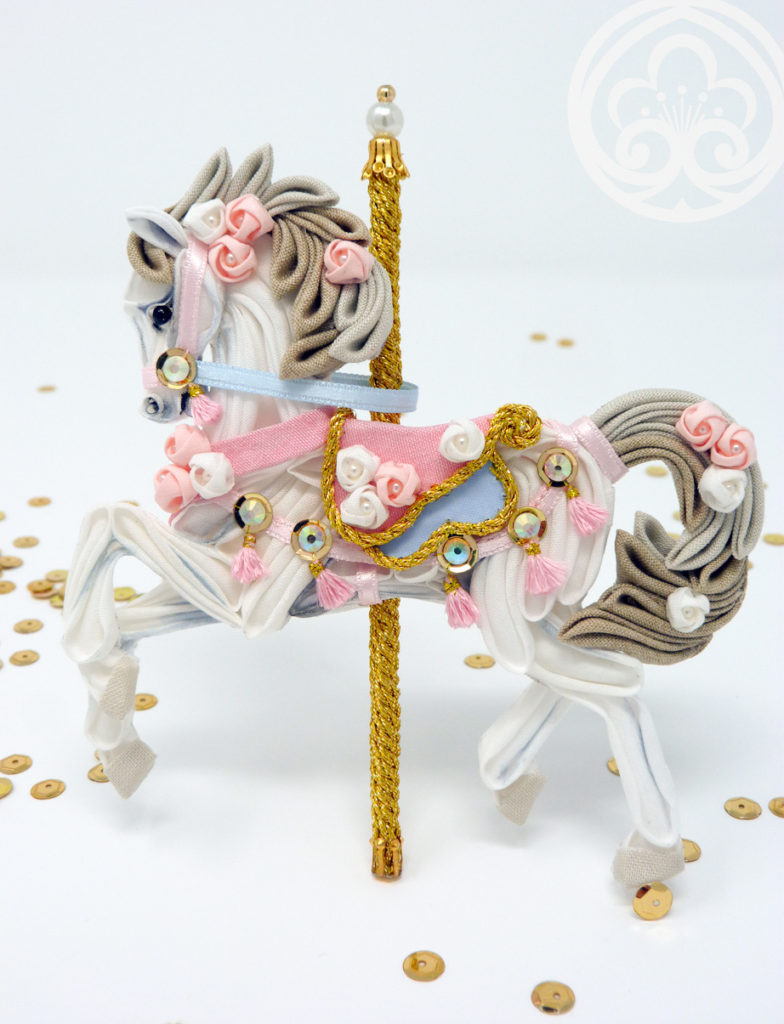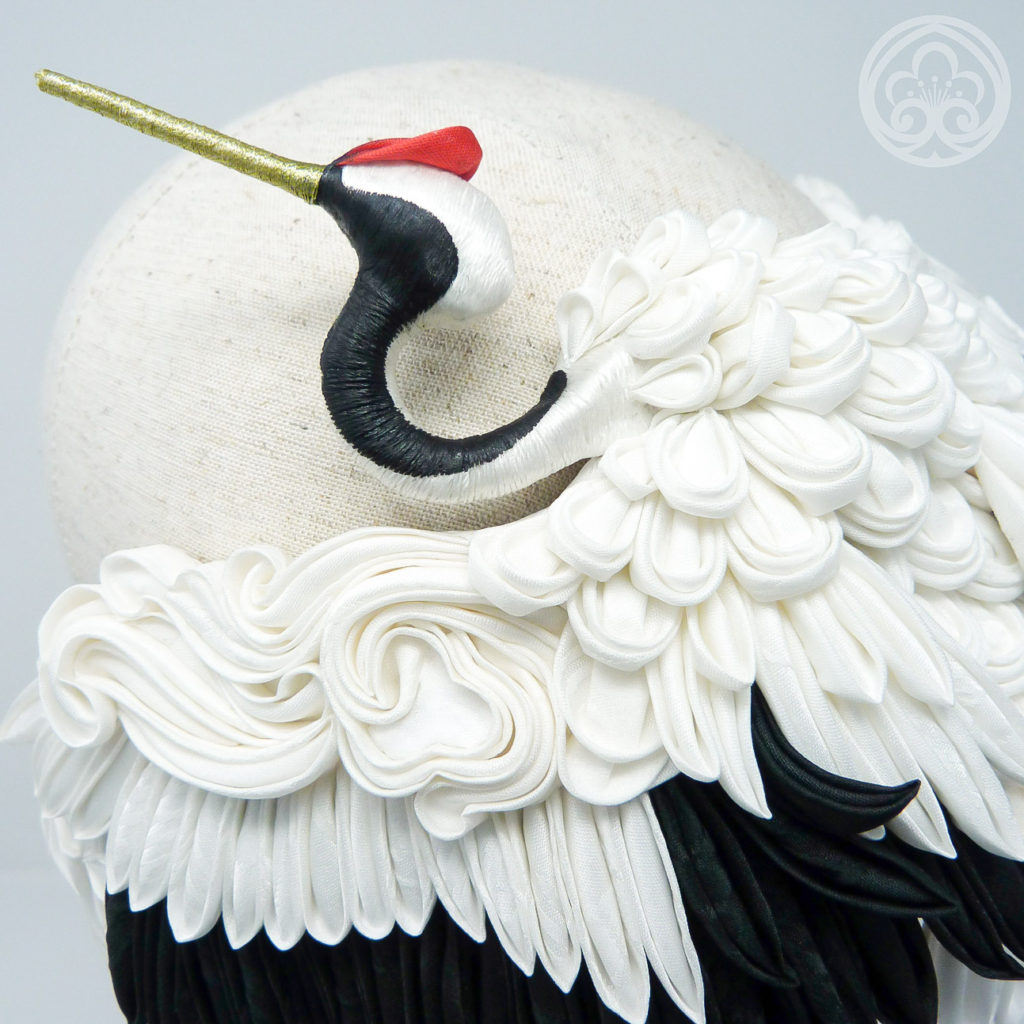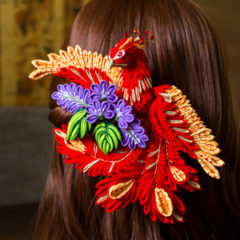
The famous Tsumami-zaiku artists will talk about their thoughts about Tsumami-zaiku.
Ms. Veronica Piccolo, an Italian artist who started original brand “MOMO Kanzashi” bringing together her love for Japanese arts and culture with her artistic taste.

Profile
2012 – Became more interested in Japanese arts and crafts and bought my first kimono. I really admired maiko and geisha appearance.
2013 – Made my first tsumami kanzashi to match my kimono.
2015 ~ – Opened “MOMO Kanzashi” online shop and started to sell worldwide, mostly Europe, the USA and Japan. I’ve been honored to work for a Tokyo Geisha and a Kyoto Maiko. Started to study kitsuke.
2017~ – Joined a Japanese Culture Association in my city to spread both tsumami zaiku and kimono knowledge with kitsuke demonstrations, workshops, and lectures.
2018~ – Started to join Kimono De Jack Italian meetings.
2020 – Opened with other passionates a kimono social page called “Kimonox3” to explain and spread kimono culture trying to erase preconceptions and talking directly about our real experiences.
Facebook : https://www.facebook.com/momokanzashi/

Q1. How did you start working on Tsumami-zaiku? (Or did you get involved?)
In my last years of art studies, I have become closer to Japanese visual arts and traditional crafts (xylography and textiles mostly). I was very curious about maiko appearance: after receiving my first kimono I wanted a tsumami kanzashi set. I did it but I wasn’t satisfied, so I’ve kept doing tsumami zaiku to improve my technique. At one point it became my job.

Q2. What are your commitments to your work and what do you care about?
I really care about spreading the real tsumami zaiku technique here in Italy. I don’t want people to confuse it with satin ribbon technique, here wrongly known as “kanzashi” (probably a big misunderstanding arrived from other artisans). When I create, I’m aware I’m not a Japanese artisan so I bring something of me into the idea and the design. I learned all by myself, without knowing Japanese language, so I developed some materials and work systems that are not traditional, but they are functioning to obtain traditional-looking pieces. I hope someday to learn from Tsumami Zaiku Japanese master

Q3. What is the attractiveness of Tsumami-zaiku for you?
When I was a painter, I represented my inner sensibility and my love for nature through brush and colours. My art has turned to tsumami zaiku because I can use not only fabric, but paper, wood, beads, mizuhiki, dyeing and so on. And what I am going to create will be used and worn and loved by someone. It is something is not only nice to see but it can be lived. And tsumami zaiku doesn’t limit my imagination: the fabric pieces are essentially repetitive elements that could arrange on every image.

Q4. What do you think about the future possibilities of Tsumami-zaiku?
Like any other high-specialized decorative art, tsumami zaiku could have more space in high fashion world. I can imagine elaborate hair pieces (or other accessories) on runaways, not only kimono ones.

Q5. What do you want to make in the future?
First, I would like to see tsumami zaiku known with its real name and its real identity between people in the craft world. In my personal artistic research, I think I will focus on tsumami zaiku for my entire life: sometimes more towards not wearable things like tsumami-ga, sometimes back to kanzashi and little brooches, I deeply want to represent globally this art with my work.

Q6. How do you think you can use/arrange or deploy Tsumami-zaiku in your country?
I think tsumami zaiku is a way to show and explain a part of Japanese culture to Italian audience. This technique is not largely known and being the first not-Japanese artisan here makes me think I can be a bridge between our arts and crafts world. I can only explain my personal experience, but I hope someday to be authorized to represent tsumami zaiku totally in my country.















